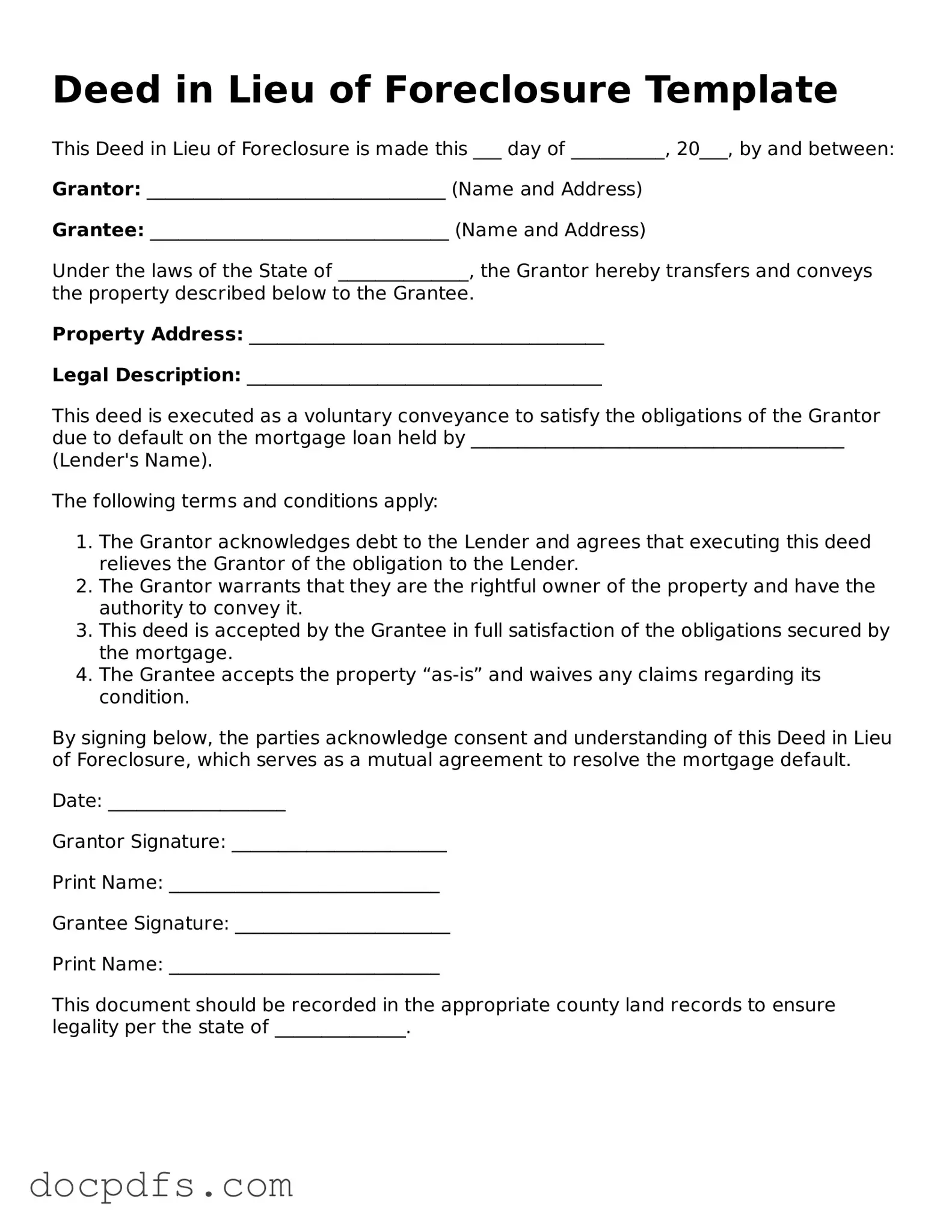The Deed in Lieu of Foreclosure form serves as a significant legal instrument in the realm of real estate transactions, particularly for homeowners facing financial difficulties. This form enables a property owner to voluntarily transfer ownership of their property to the lender, thereby avoiding the lengthy and often costly foreclosure process. By executing this document, the homeowner relinquishes their rights to the property in exchange for the cancellation of the mortgage debt. This arrangement can provide a more amicable solution for both parties, as it allows the lender to recover the property without the need for court intervention. Additionally, the Deed in Lieu of Foreclosure can help mitigate the negative impact on the homeowner's credit score compared to a formal foreclosure. The process typically involves negotiations between the homeowner and the lender, ensuring that all terms are clearly outlined and understood. It is essential for individuals considering this option to be aware of the implications and requirements associated with the form, as well as any potential tax consequences that may arise from the transfer of property ownership.
